Making your way around Bukchon Hanok Village and its namesake streets can be challenging. But with my recommendations, navigating the historic village can be easy.
If you want to live out your fantasies in a old school Korean drama, then you’ll fall head over heels for Bukchon Hanok Village. Bukchon Hanok Village is one of the only places left in Seoul that still retains its traditional Korean history. That’s why I chose to stay in this quaint residential area at Cheong Yeon Jae. The village dates back to the Joseon Dynasty that ruled from 1392 to 1910, making Bukchon Hanok Village over 600 years old. During this time, royal families, aristocrats, wealthy citizens, and government officials lived in many of the hanok residences in the village.
The number one most notable and traditional feature that makes up this beautiful village are it’s hanoks, or traditional Korean houses. Hanoks are created only using earthy materials: Korean red pine wood, earth, and stone. To check out what the inside of a hanok looks like, check out my article on my stay at Cheong Yeon Jae, where I got to stay in a traditional Korean hanok!
In Korean, Bukchon means northern village. The village is technically considered North of Seoul since it’s above Cheonggyecheon Stream, where I spent the previous night at the Seoul Lantern Festival. Bukchon Hanok village is nestled between the two famous royal palaces of Gyeongbokgung and Changdeokgung. In the 1960s, the area was supposed to undergo a renovation, which meant the destruction of all the hanoks. But the locals protested and were able to spare this small area from modernization. Because of this, today, the old Joseon Dynasty’s history lives on.
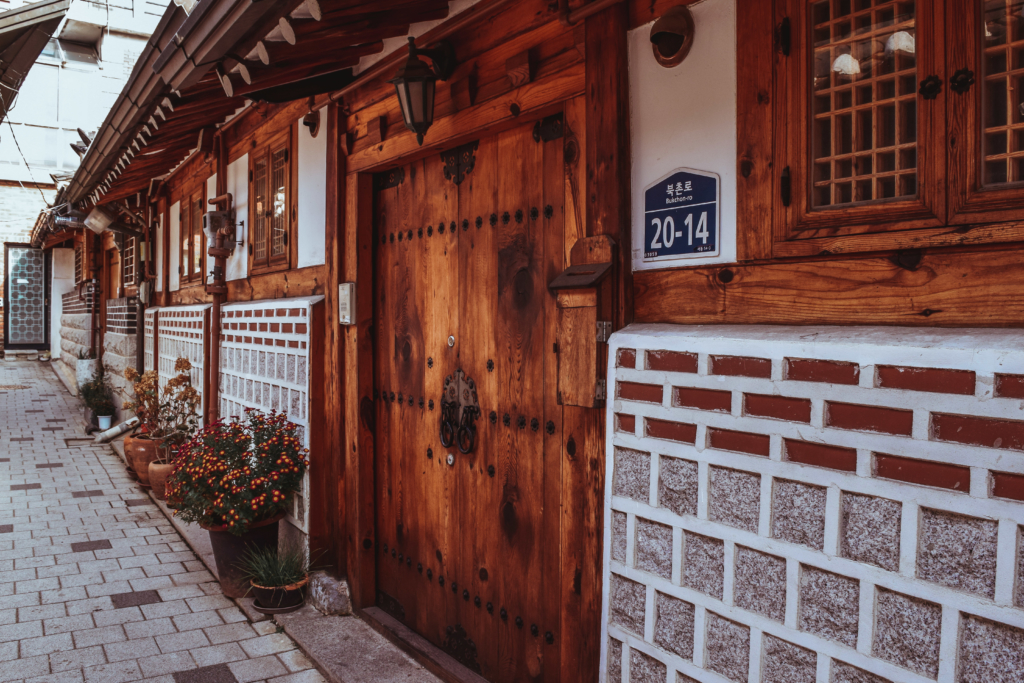
Before we dive in, some quick essential things to know about Korean streets. You will notice all streets end in –daero (boulevard), –ro (road), or –gil (street). Each is distinguished by width: –daero is over 8 lanes, –ro is 2 to 7 lanes, and –gil is 2 or less. The same street will be reused in certain areas, but just be prefaced by a different number as you will notice below. This can make traveling pretty difficult, but at least it gives you an idea of if you are in the right area. For example in Bukchon-ro 11-gil, the number 11 signifies that it is the 11th street diverging from Bukchon-ro. Confusing right?
Understanding Korean Streets and Numbers:
You will notice all streets end in –daero (boulevard), –ro (road), or –gil (street). Each is distinguished by width: –daero is over 8 lanes, –ro is 2 to 7 lanes, and –gil is 2 or less. The same street name will be reused in certain areas, but it will be prefaced by a different number as you will notice below. This can make traveling pretty difficult. For example in Bukchon-ro 11-gil, the number 11 signifies that it is the 11th street diverging from Bukchon-ro. Confusing right? And if the street is Bukchon-ro 11ga-gil, the prefix -ga symbolizes that it’s a diverging street within that street. I know..!
1. Gyedong-gil
The key to exploring Bukchon Hanok Village is to just get lost. Follow the small alleyways, the closed off enclaves, and find those restaurants and tea houses that bring the old dynasty back to life. The village is rich in restaurants, tea houses, cultural centers and more, so there is no shortage of activities. One of my favorite streets was right behind my stay at Cheong Yeon Jae called Gyedong-gil. It was long and ran along the top to the bottom of the village. The street is filled with fun stores (I bought my faux fur headband in one of them for just $10!), authentic Korean food stalls, beautiful architecture, cultural centers, residential areas and more. We even came across a local vendor distributing eggs to restaurants and locals on a small open pick up truck!
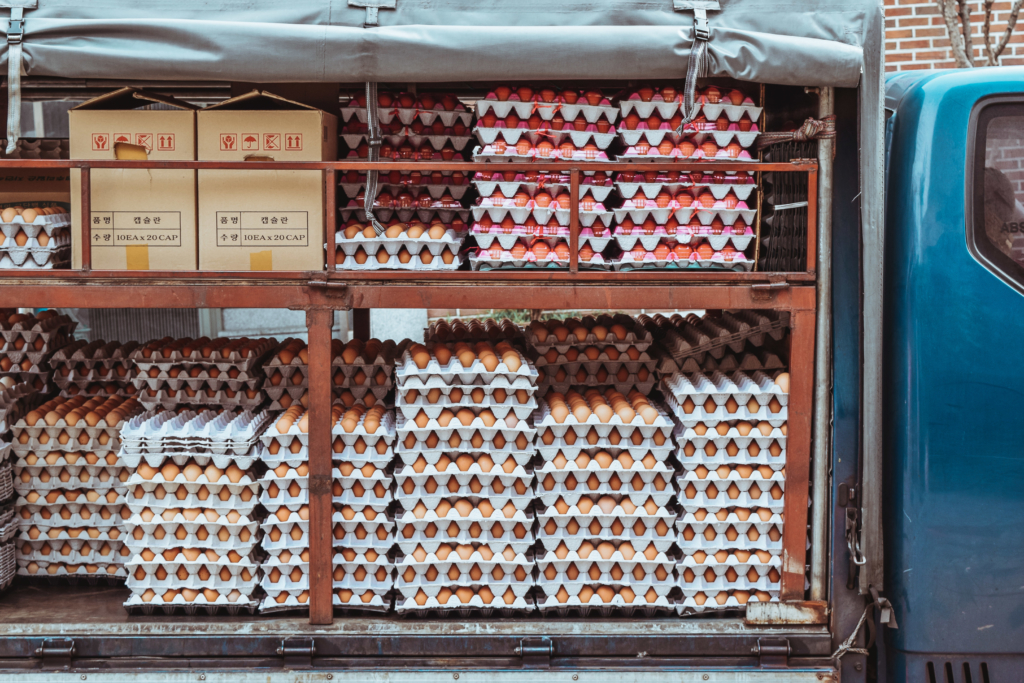
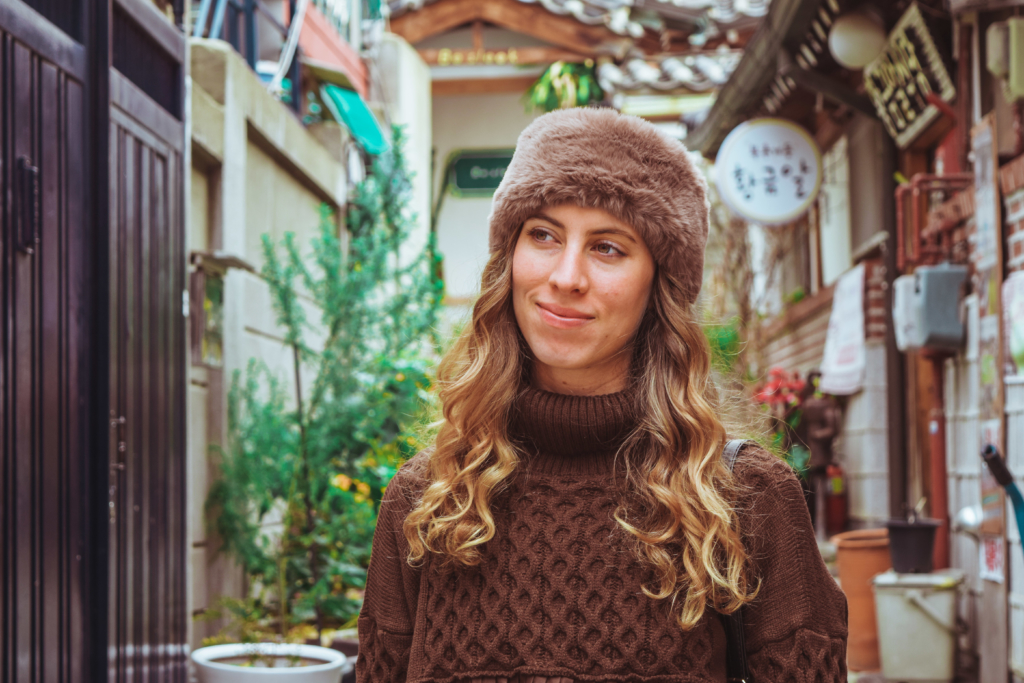

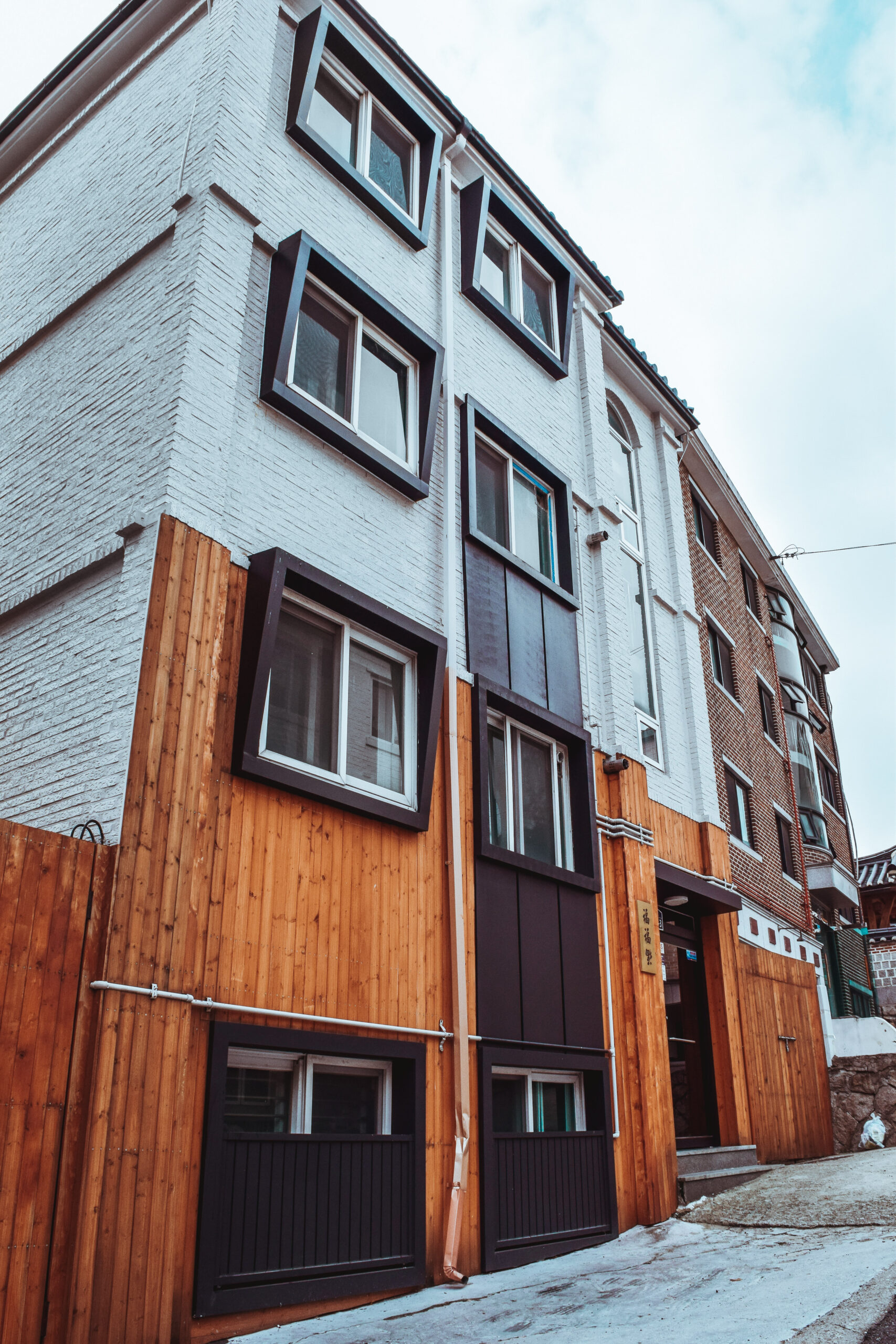
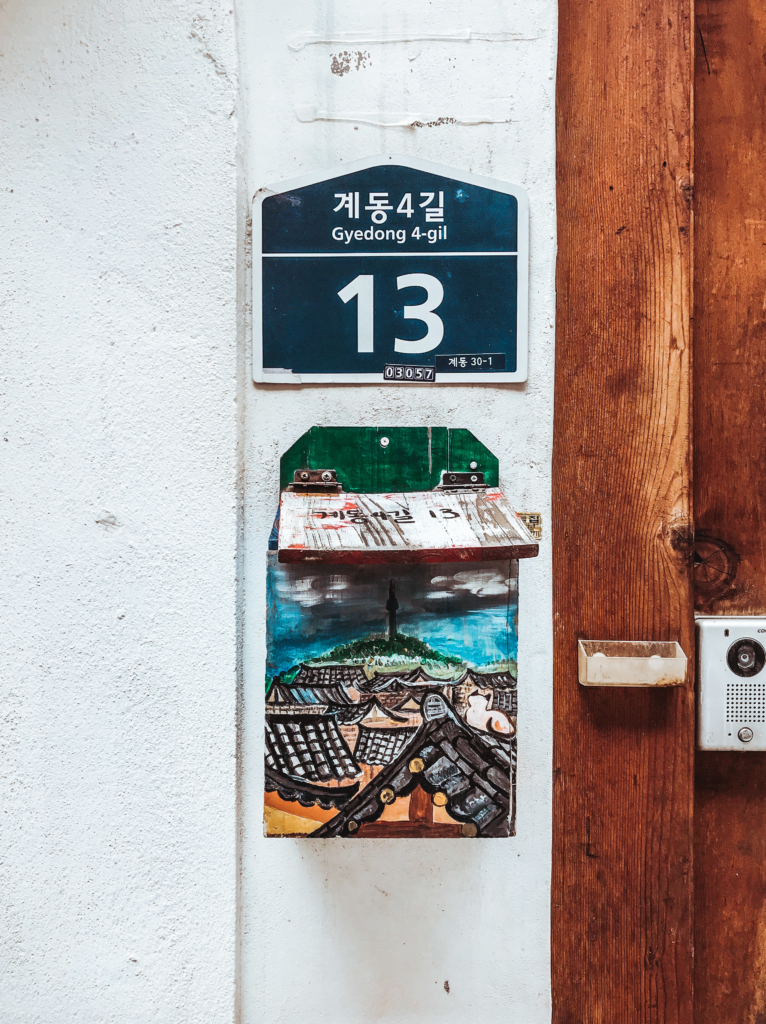
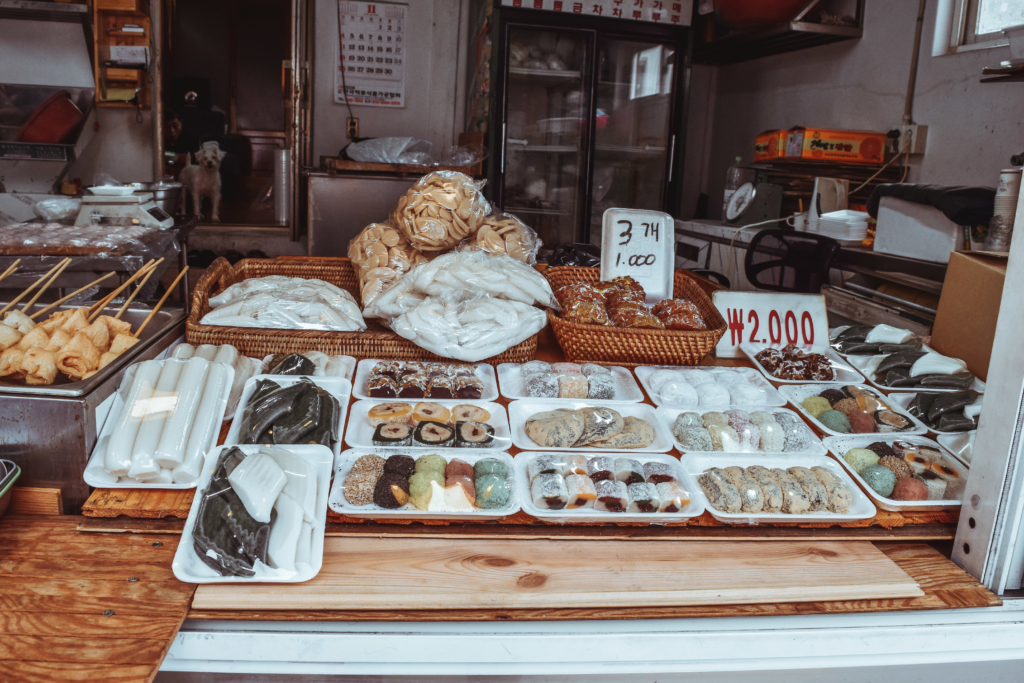
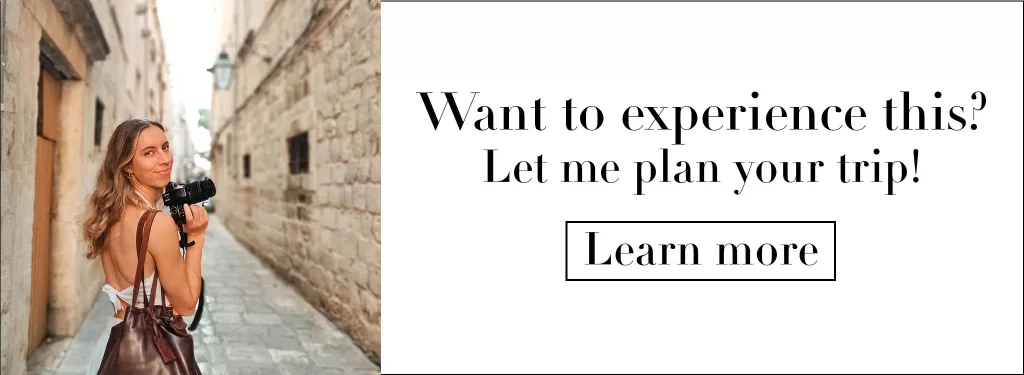
2. Changdeokgung 1-gil
Off Gyedong-gil is the road Changdeokgung 1-gil that leads to Changdeokgung Palace. On the way there you will come across an extremely well-designed, contemporary yet ancient store called HAMU. It is owned by costume designer Lee Jin-hee and is a great representation of how traditional Korean culture is showcased in todays modern society. I highly recommend you stop by her store if you get the chance! And if, like me, the products are a bit out of your price range, still stop in to admire her designs and the building.
3. Changdeokgung Palace
Many partake in a typical Korean activity that truly brings Korean culture back to life. Small stalls around Bukchon Hanok Village allow foreigners to rent a hanbok, or traditional Korean clothing, for a day and wear it around the village. This allows you to take those perfect Instagram-worthy shorts for only $15 an hour. You can even pre-order the hanbok’s online so you can pick them up on arrival. Having worn traditional hanbok the day prior at Cheong Yeon Jae, we chose to opt out of walking around Changdeokgung Palace with it. Instead, we decided to take a stroll along the outskirts of the palace and admire it’s beautiful exterior gardens. Fall is the perfect time to visit Korea, especially for it’s foliage, so we got lucky we still found some during our time at the end of November! It’s safe to stay, I quite literally am “fall”ing in love with Seoul.

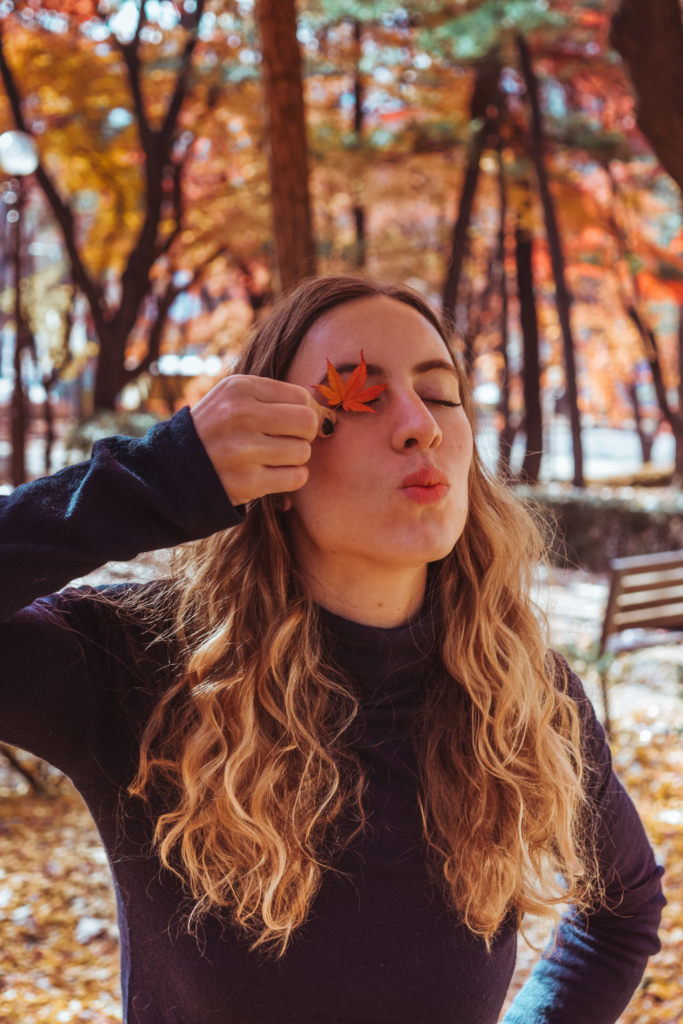
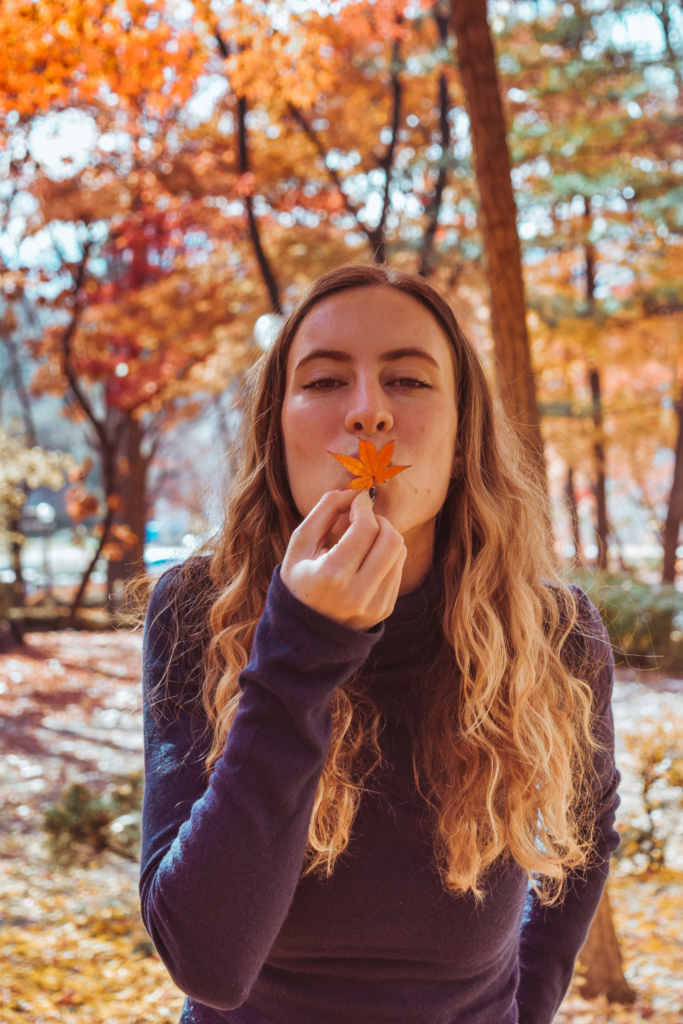
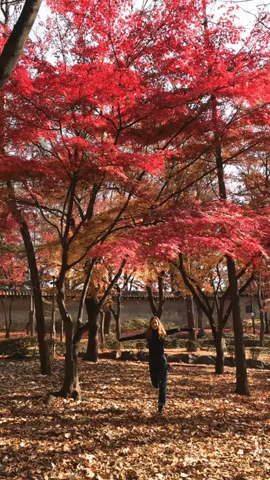
4. Changdeokgung-gil
Gyedong-gil Street is cut off by Changdeokgung-gil street. A hill that takes continues with cute cafés and residential areas.
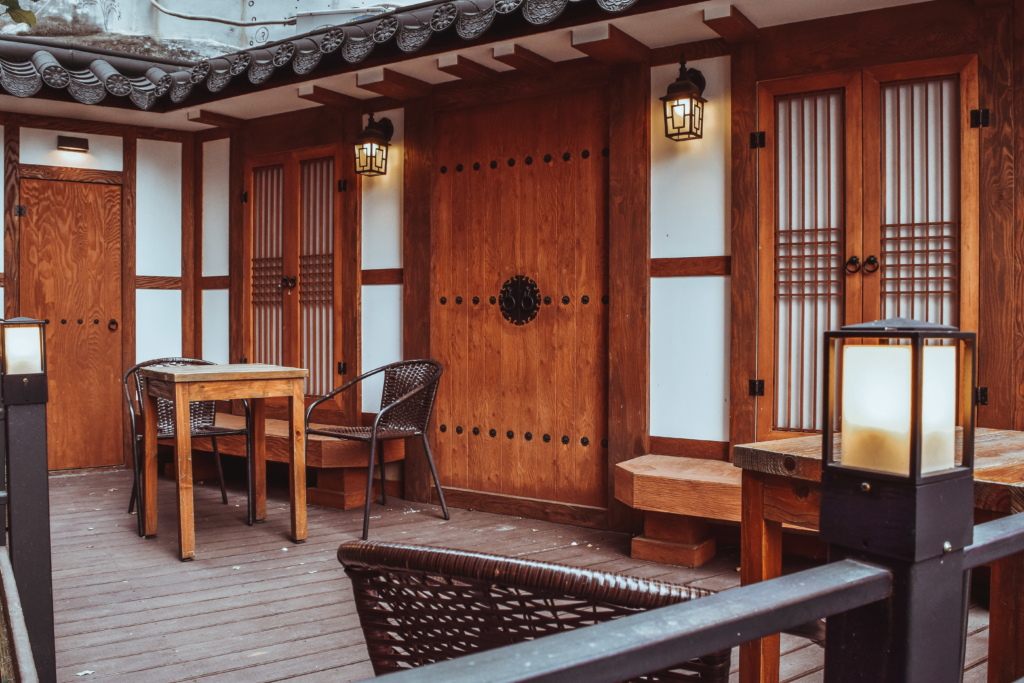

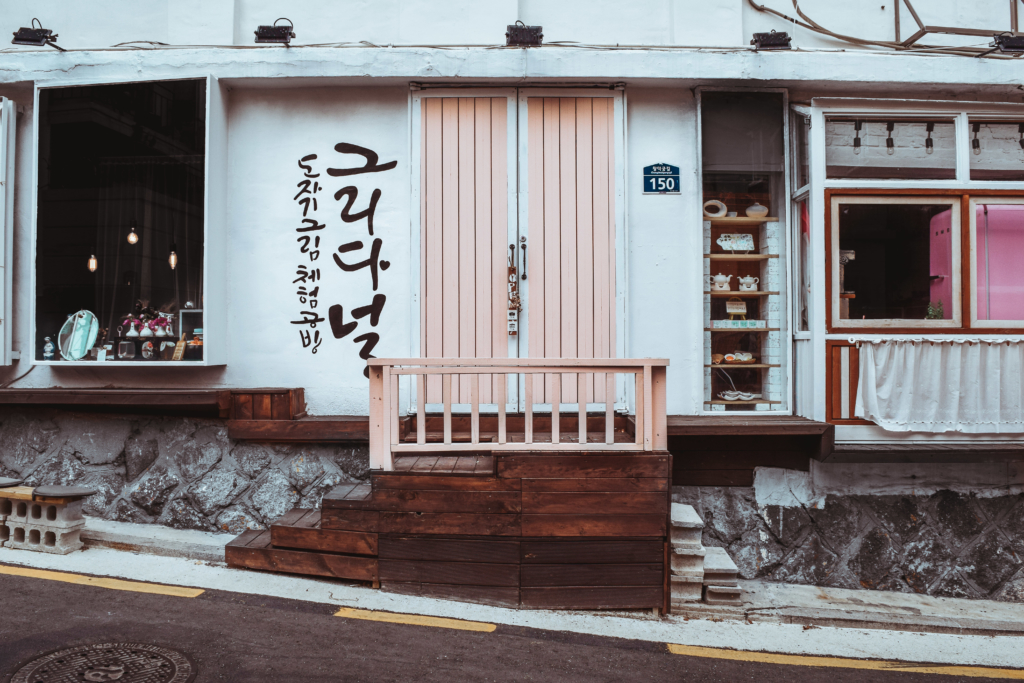
5. Bukchon-ro 11-gil
Bukchon-ro has some of the most famous streets in the entire village. It has cute galleries such as Gallery Sai that include a traditional tea house and small streets where no photography is allowed where you can create your own perfume based off of your needs (calming, invigorating, awake, centered etc). Their boutique stores had to be my favorite. Korean style is made for small people like me and is quite frankly very flattering. Simple and fun, shopping here had to be one of my favorite activities. The prices are not too expensive, but making the purchase isn’t the easiest thing.
Trying on clothing in Korean stores:
A lot of Korean shops don’t allow you to try on clothes in their store. You can purchase them and try them on at home. If you don’t fit in them or like them, you can go back and return them. Strange concept and a bit of a hassle if you are out of the way, but the clothes are so nice that it’s worth it.
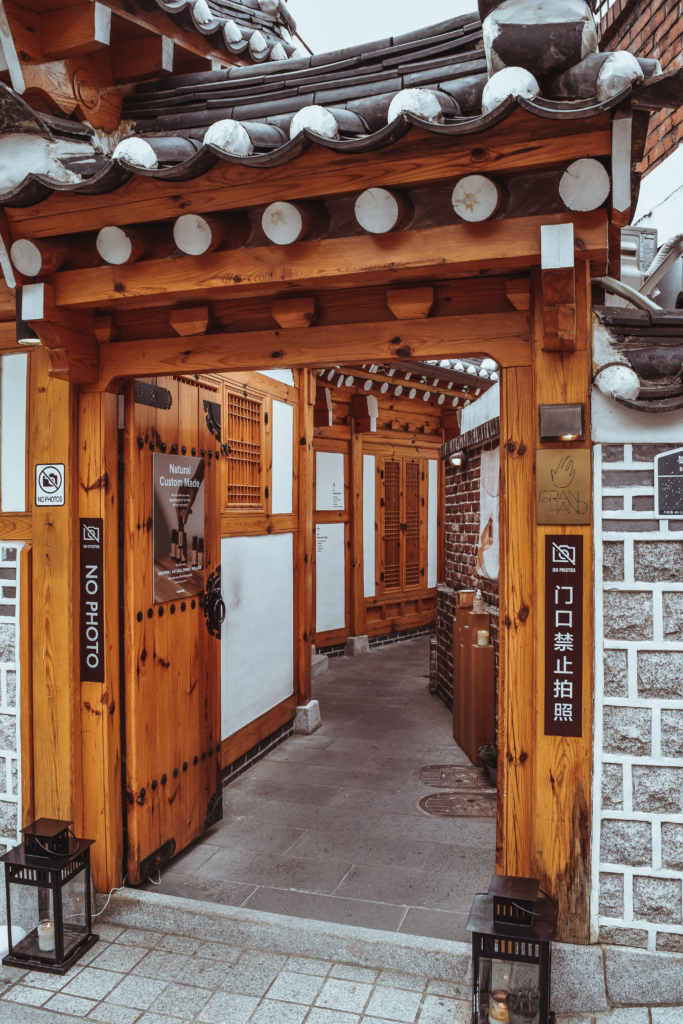
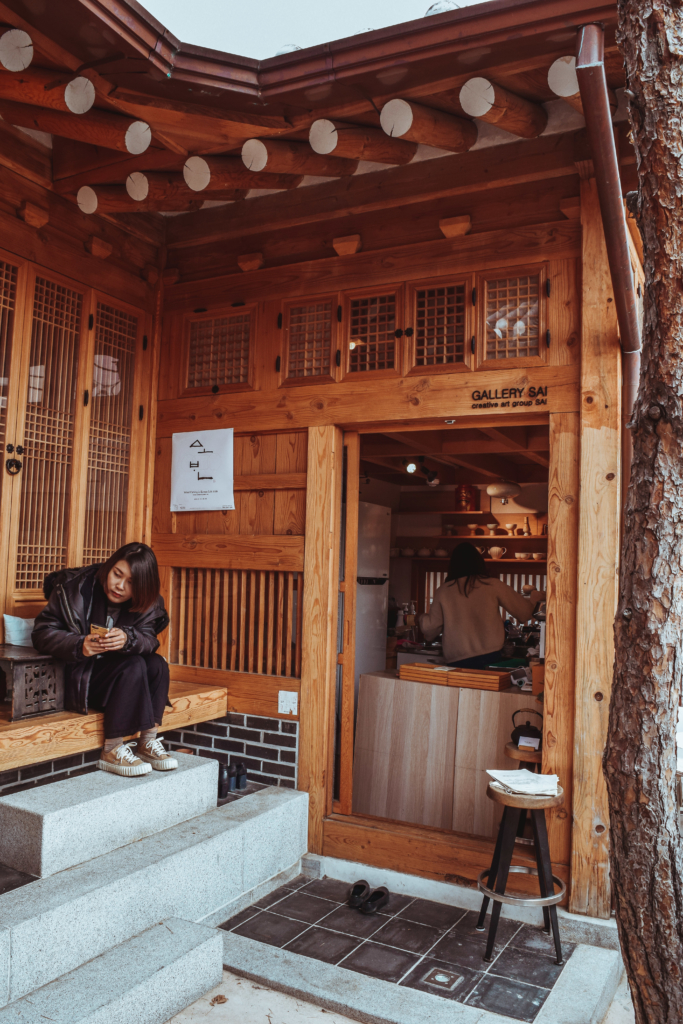
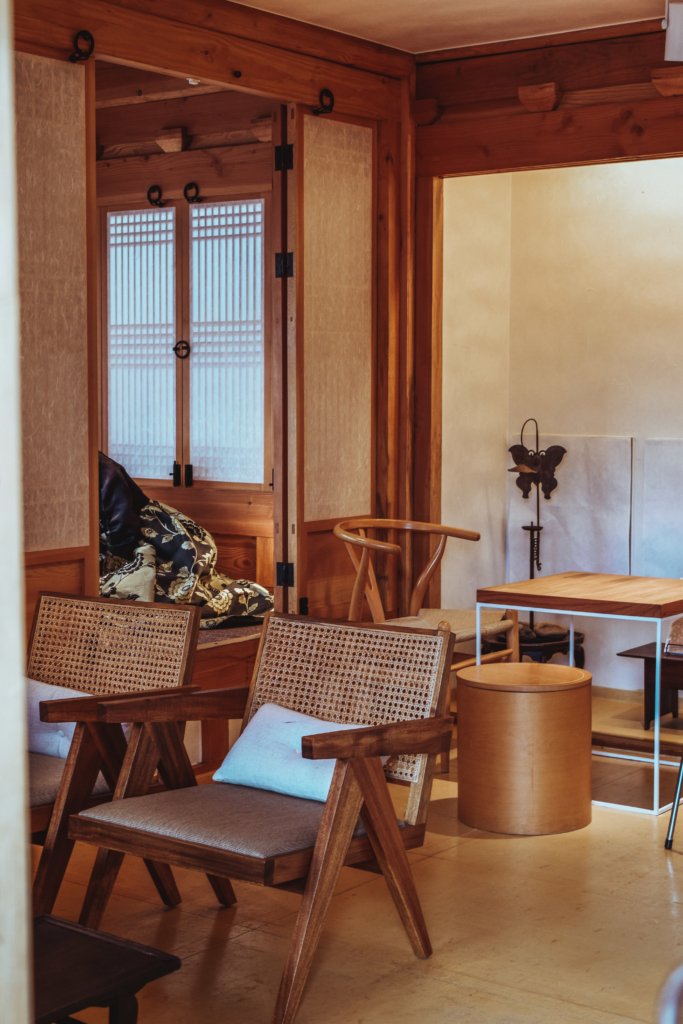
6. Bukchon-ro 11ga-gil
This is the most famous street in Bukchon Hanok Village. It’s the peak of the village. From the top you can see all the hanok rooftops below. You’ll see a ton of people walking around in their hanboks and you might be one of them as well! Just remember to be quiet when walking around. A lot of people still live in the area and they have complained of tourists disrupting their daily lives so be considerate.
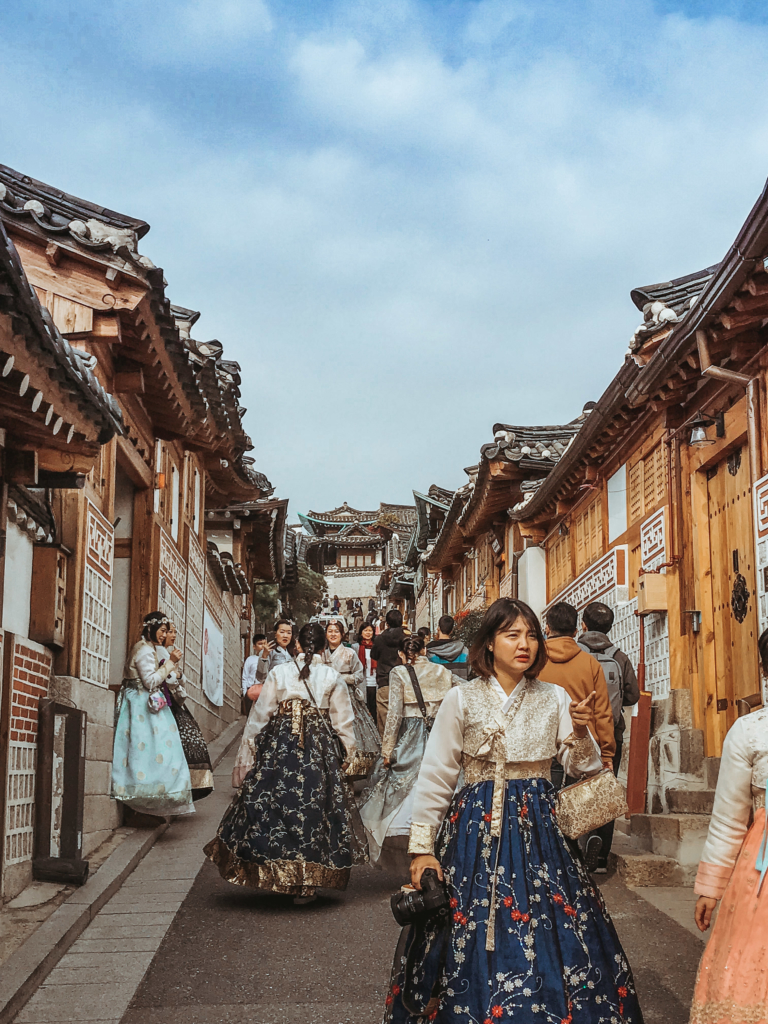
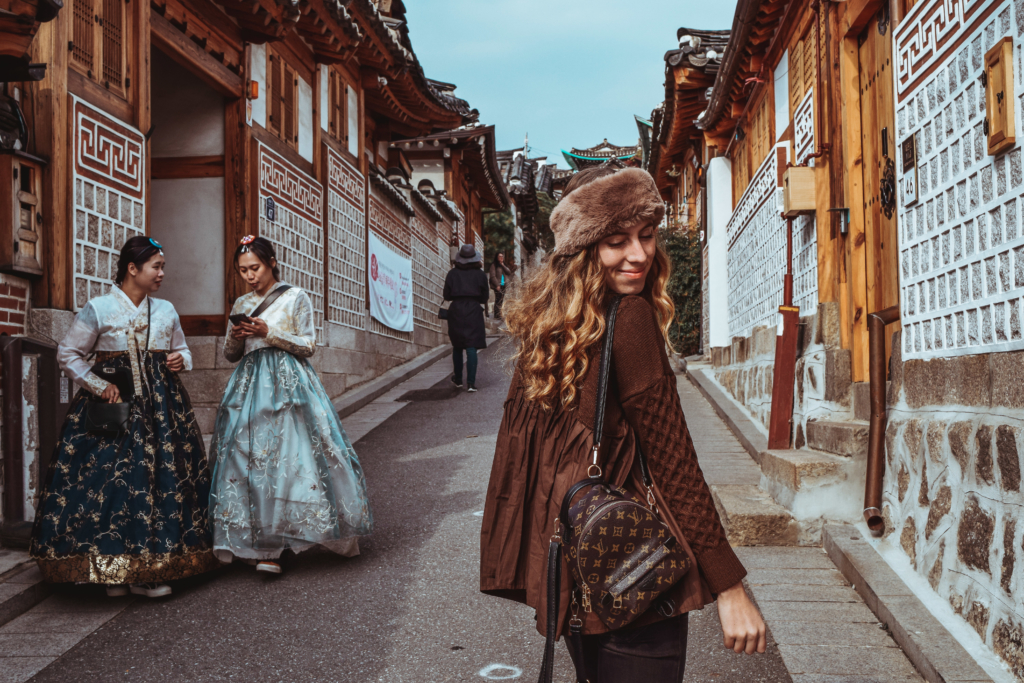
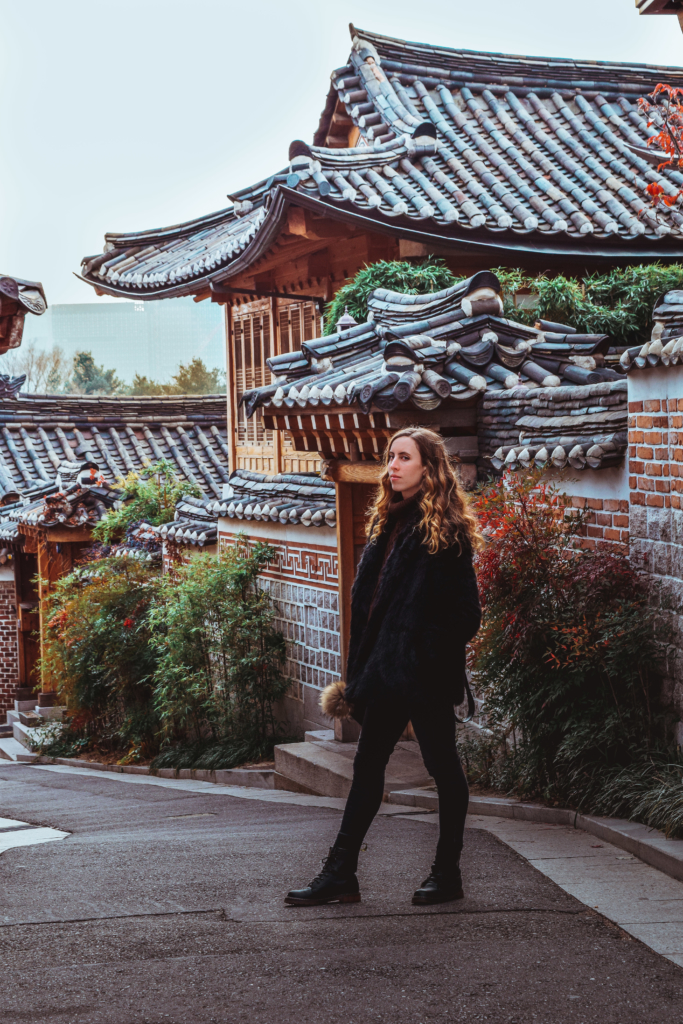
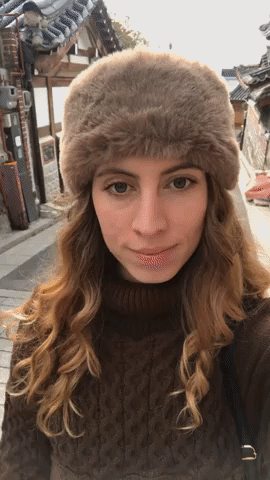
7. Bukchon-ro
No visit to the Bukchon Hanok Village is complete without a stop in one of the many bakeries and cafés along Bukchon-ro. Two of my favorites are Layered and Anguk 153. When you walk into Layered you are greeted by a table of freshly baked scones and cakes of the day. The options are endless. In the summer the roof retracts and leaves an open aired area for you to enjoy coffee and cake. And ok…Anguk 153 isn’t exactly on Bukchon-ro, but it’s nearby. It has some of the most amazing breads and pastries I have ever had. For more on Anguk 153 see below.
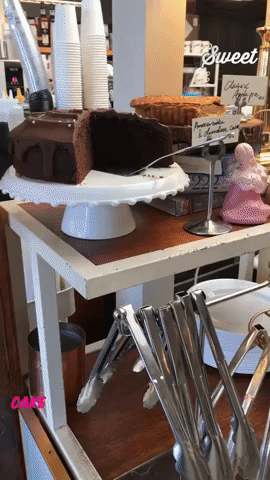
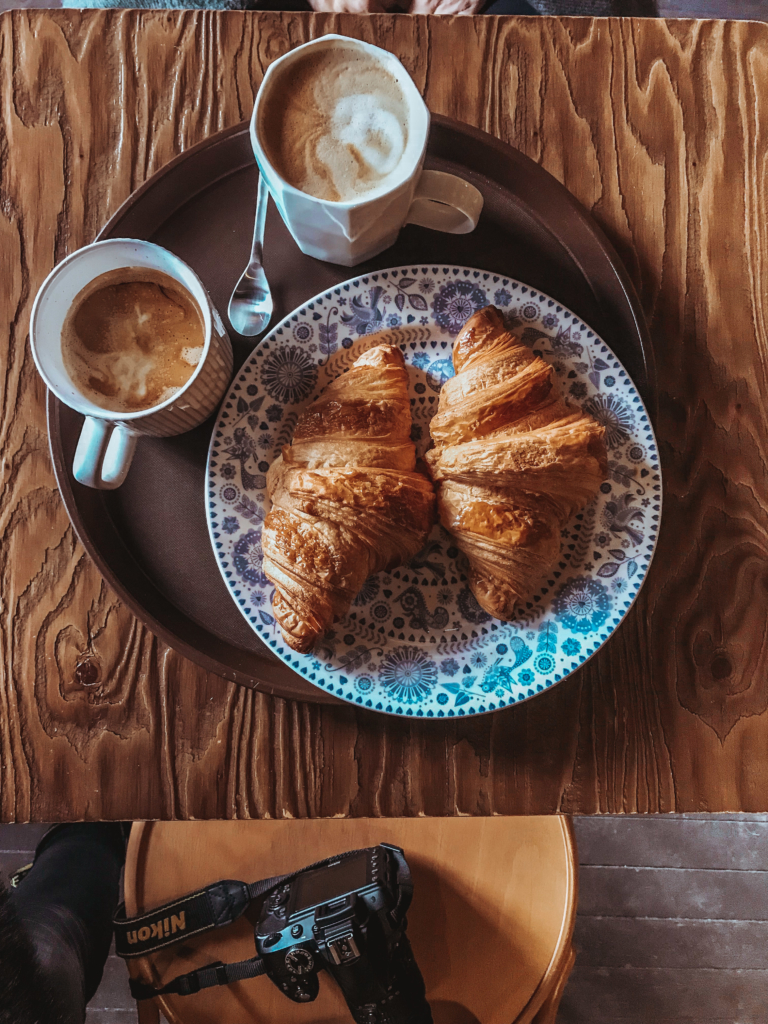
Where to Eat Breakfast in Seoul: Anguk 153
Get my look!
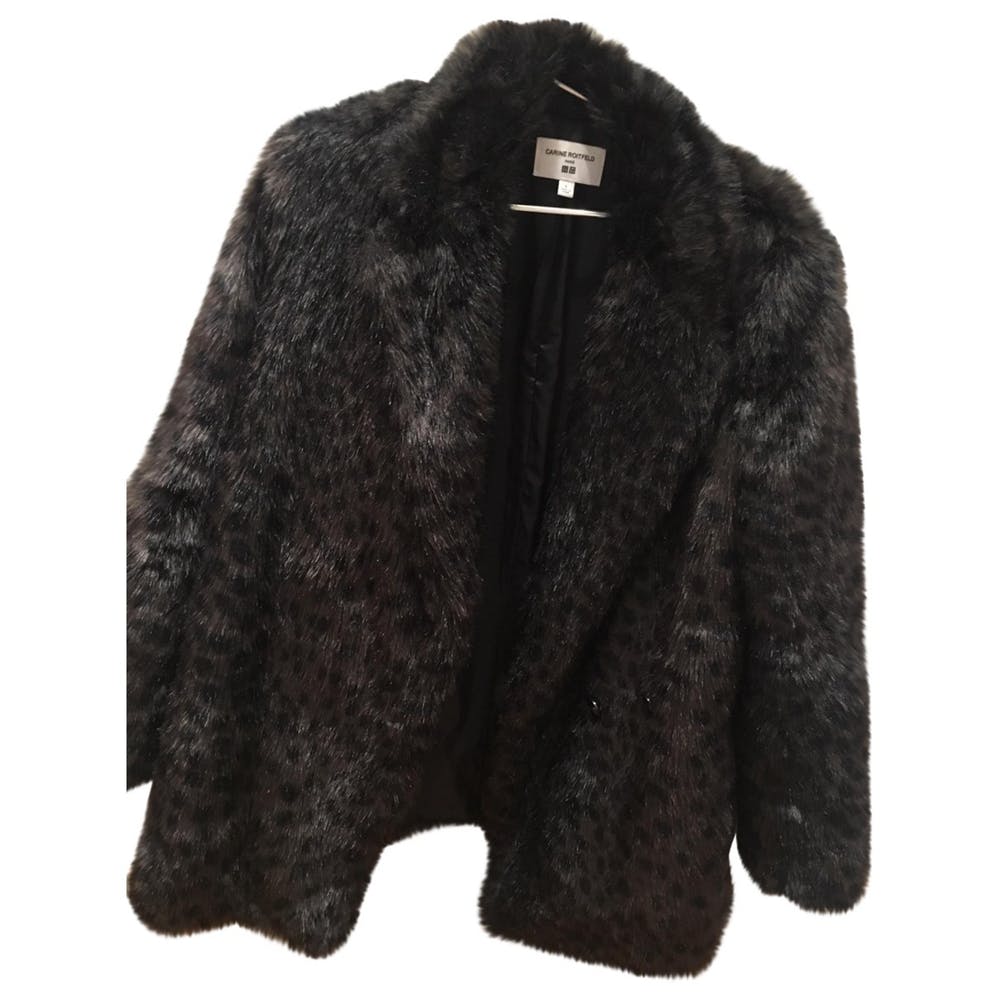
UNIQLO Carine Roitfeld Black Fur Jacket

UNIQLO Boyfriend Jeans
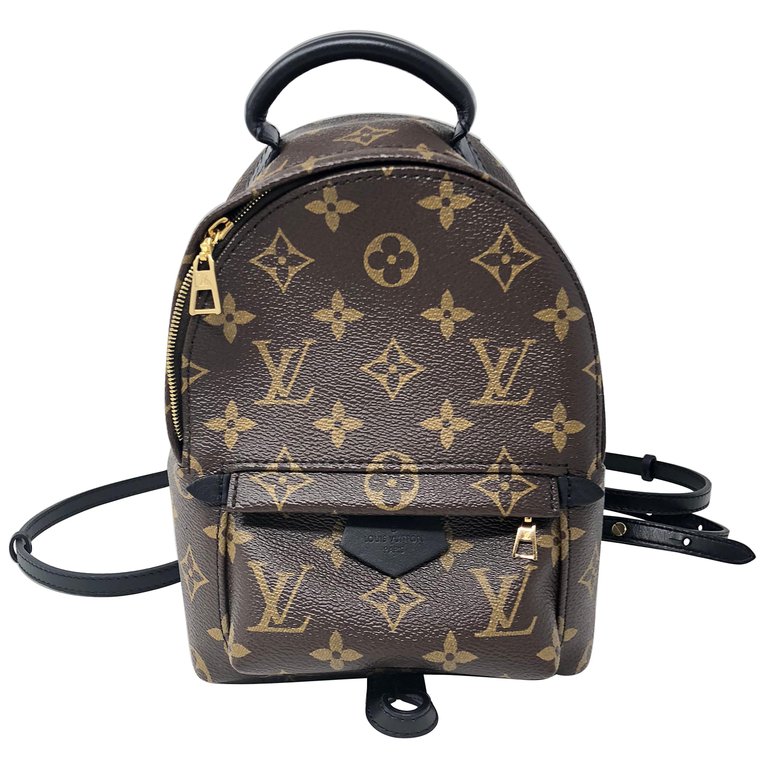
Louis Vuitton Mini Backpack
Follow SVADORE on:
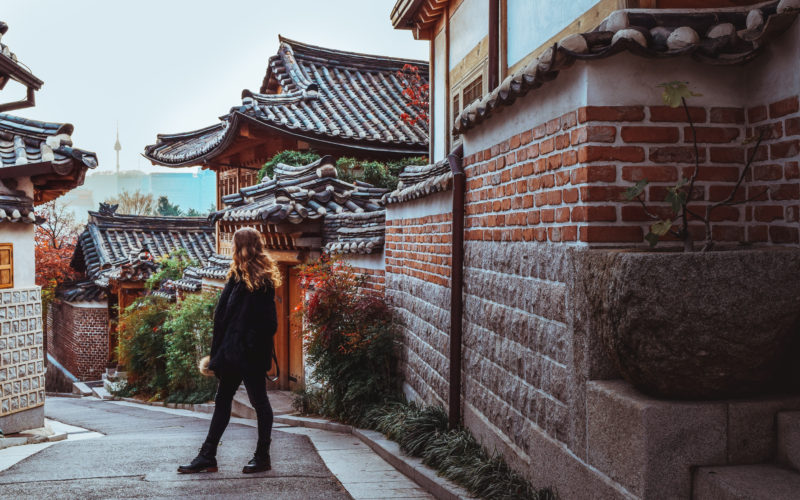
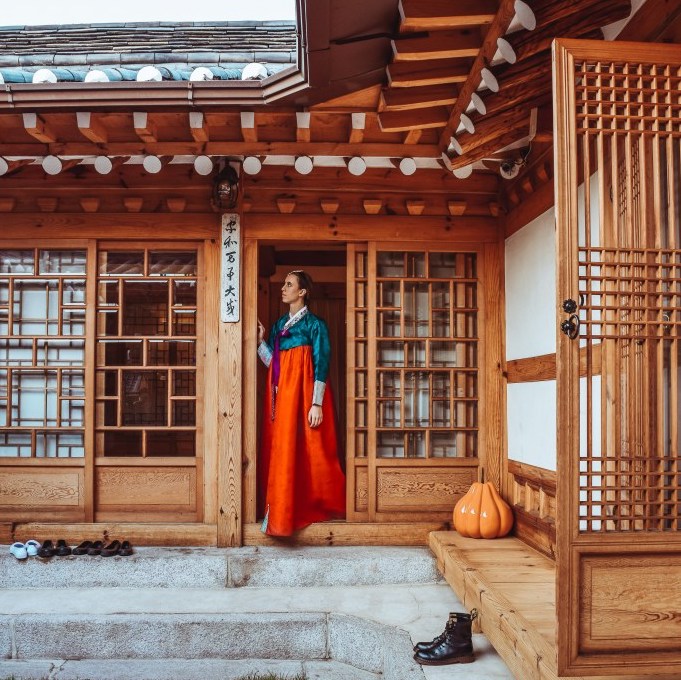
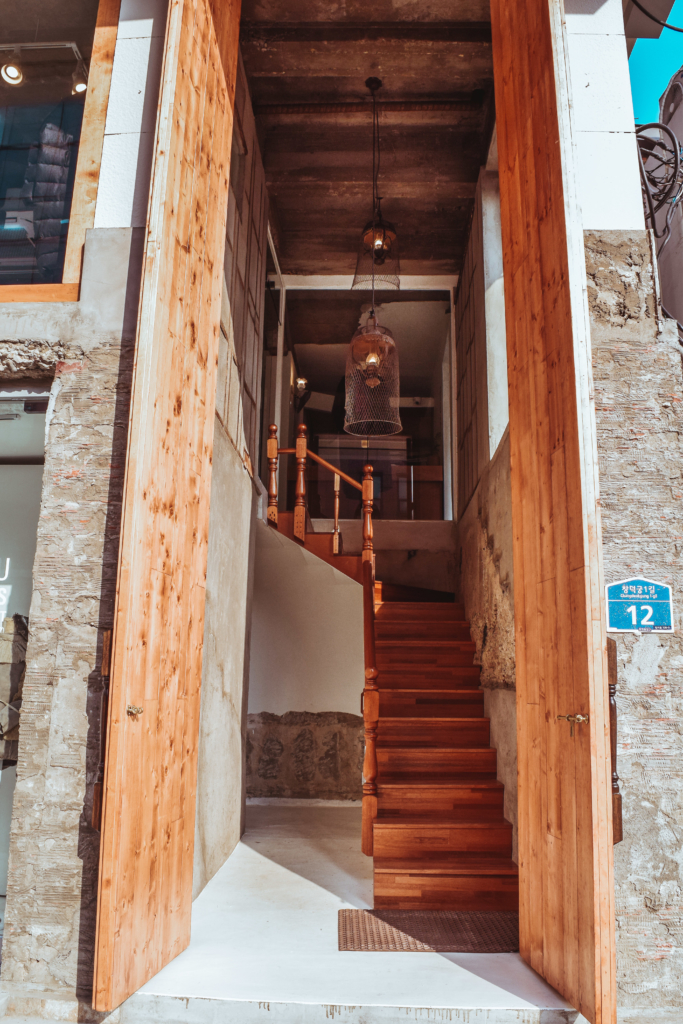
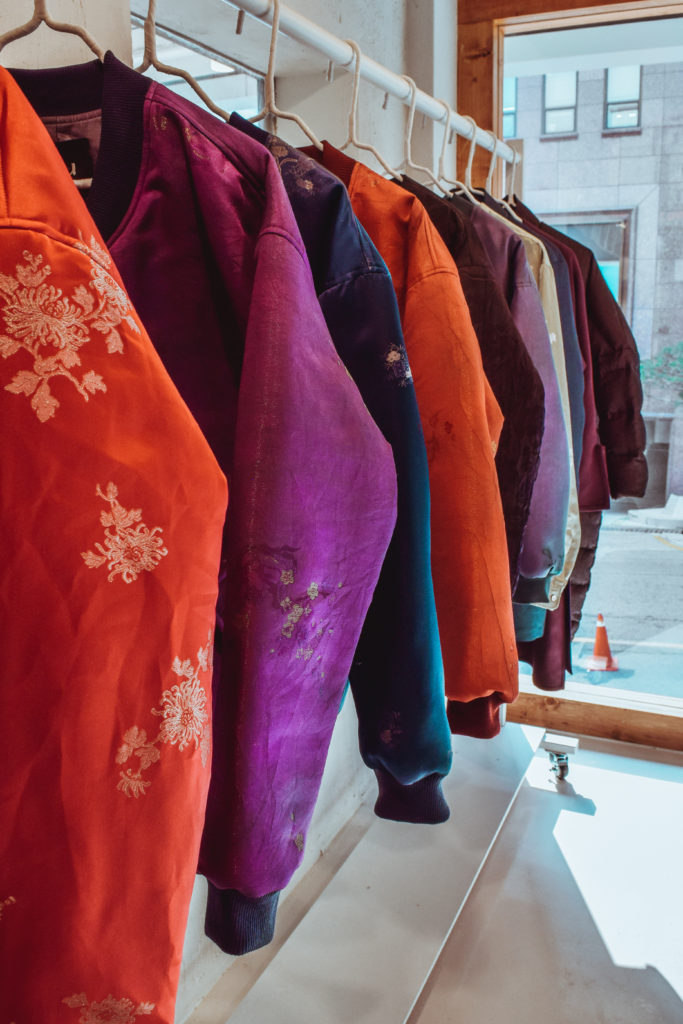

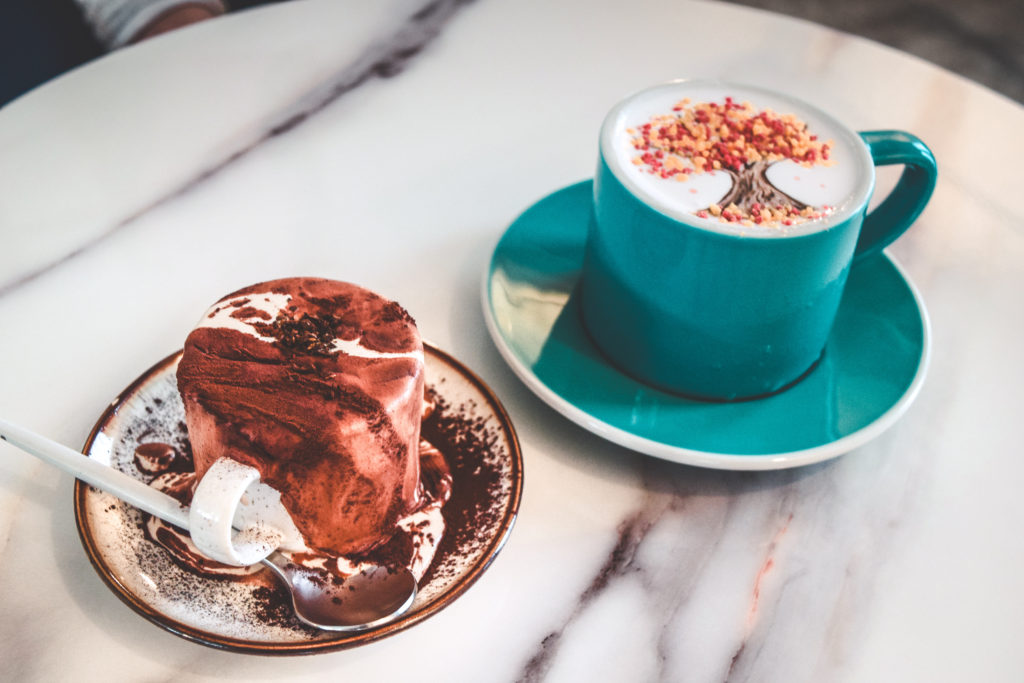







7 comments